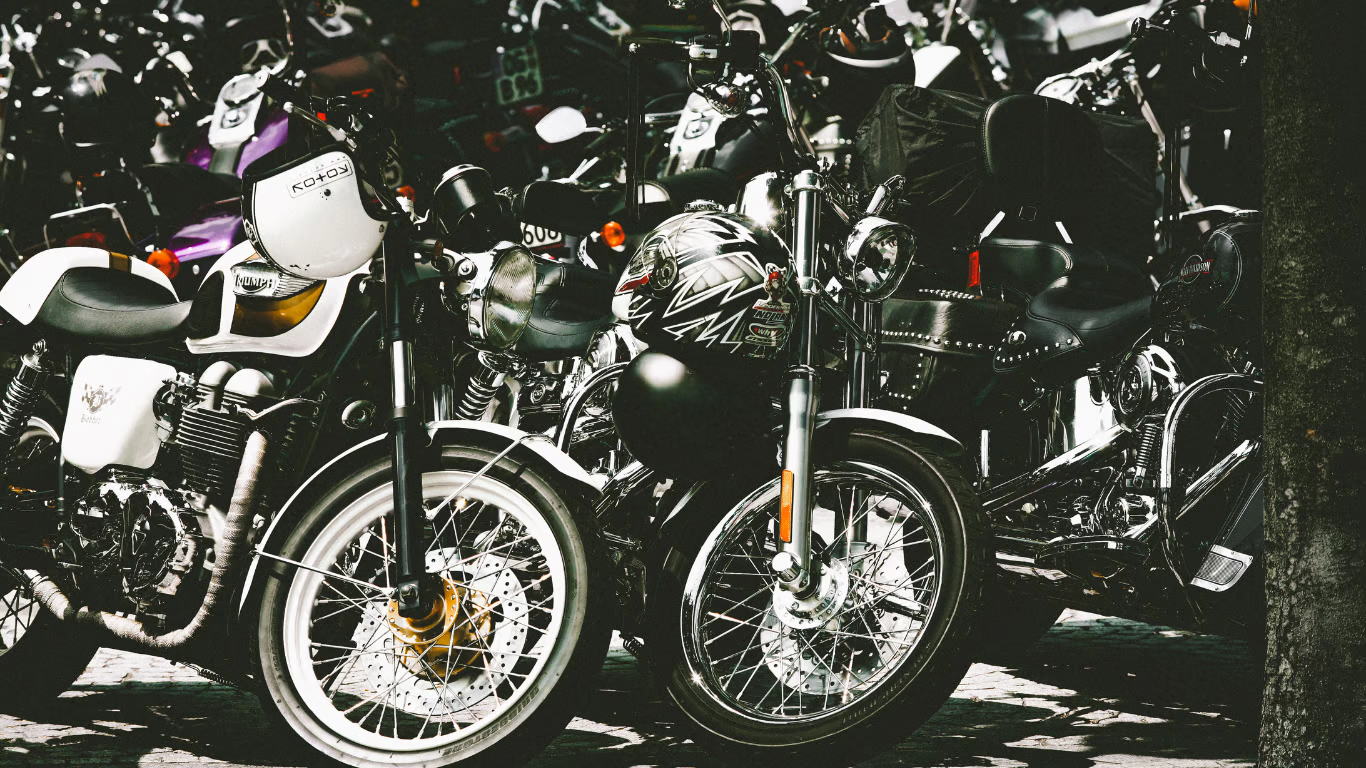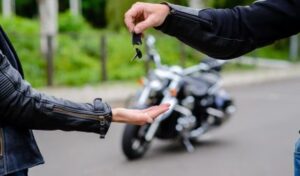Would you ride a bike during the rainy season? If yes, then make sure you are ready for the same; otherwise, you will be in big trouble.
In adverse weather, your motorcycle will necessitate additional care.
I even faced the same issues while driving my two-wheeler in the rain; it caused a lot of damage.
In my opinion, you should break the process down into three parts: what you have to do before riding, what you should do while riding, and what you have to do after riding in the rain.
I am here to provide you with all of the instructions and recommendations that will keep your vehicle protected and secure.
7 Tips To Keep The Motorcycle Safe When It’s Raining:
Even though buying a bike is a big investment, you should really pay attention to the tips below to avoid accidents when riding your motorcycle during the rainy months.
Because of these useful tips, your two-wheeler will last longer, and you won’t have to spend as much money on repairing it in the future.
1. Get The Service Done Regularly:
To keep the condition of the bike in good condition, it is very important to get the bike serviced on time.
But we can avoid unnecessary trouble by getting our motorcycle serviced on time. So, before taking the bike out in the monsoon, check whether the service has been done on time or not.
If the service has not been done on time, then do get the service done before riding the bike in the rain.
2. Keep The Bike Under Cover Or Shade:
Two-wheelers are automatically more vulnerable to inclement weather than four-wheelers.
We all know that no one likes to sit on a wet seat due to rain. After getting wet in the rain, water seeps into the internal parts of the bike.
This increases the risk of rusting and damage to the wiring on the bike. That’s why you should always keep the bike covered.
3. Teflon Coating And Anti-Rust Protection Layer:
Most bikes these days come with a fiber body. However, Royal Enfield motorcycles and some scooters still come with metal bodies.
A Teflon coating should be applied to the panel to protect the bike from rusting in the rain.
At the same time, for long-term care, an anti-rust protection layer should be used.
4. Tire Check:
In the monsoon, the roads become muddy and slippery. That’s why it is very important to keep the condition of the tires on the bike in good condition.
You can check the depth of the tyre by inserting it into the groove of the tyre to inspect its condition.
This depth should be greater than at least 2 mm. At the same time, when you ride a motorcycle, the air in its tires should also be slightly lower during rainy days than on normal days.
5. Cleaning The Bike:
The rainy season means mud, which can accumulate on the parts of your bike.
Some parts, like the chain drive and engine, can be affected by this. Some bikes come with a complete chain cover, while others have an open chain cover, which makes the chain vulnerable to mud and water.
As a result, cleaning and lubricating the engine and chain after every 500 km of driving is essential.
6. Checking Brakes:
The brakes (drum or disc) of the bike get affected by rainwater, and their performance usually gets reduced.
So, check the brakes thoroughly beforehand, and try to keep the disc clean in the case of a disc brake. Even if your bike has an anti-lock braking system (ABS), you shouldn’t brake quickly.
7. Lubricate The Chain:
With regular rain, there is a great chance that the chain will wear out, so to avoid such issues, you should keep lubricating the chain.
This will act as a protective guard and prevent rusting that may become the cause of broken chains.
Remember The Following Tips While Riding a Motorcycle In The Rain:
One should always drive carefully on the road, especially in the rainy season. Special caution should be taken while driving a two-wheeler in the rain.
It is very important to take care of some special things. If these important things are ignored, then driving on the road can be dangerous.
Today, we’ll go over 9 essential tips for safe bike and two-wheeler riding in the rain.
By adopting these you can do safe bike riding even during rain
Control Over Speed:
It is dangerous to ride a bike at an excessive speed in any weather.
Riding at high speeds becomes more dangerous during rainstorms because the bike slips more.
Don’t ride the bike very fast. Always be alert so that you can easily control the bike in sudden situations.
Take Brakes Carefully:
Avoid applying the brakes suddenly while riding a bike in the rain.
If you need to brake quickly, use both the front and rear brakes at the same time. Try to use only the rear brake during normal braking.
Only use the front brake lightly, as well as the rear brake if necessary.
Do not apply brakes on turns.
Use Headlight:
When the visibility is reduced during rain and you are riding a bike, keep the headlights on.
Doing this will help you to ride the bike, while the drivers of the vehicles coming from the front will be able to see your bike easily. With this, the risk of an accident becomes very low.
Follow The Vehicle In Front:
By adopting these tips, you can avoid sudden potholes or stones lying on the road. While driving a bike or scooter in the rain, you can follow the car or auto running in front for a certain distance.
Maintain the bike in the center of the front or rear of the vehicle.
This will assist you in comprehending how the auto or car emerges from the side of the road, from pits, and so on.
This will make it very easy for you while driving.
Maintain Reasonable Distance:
Keep a safe distance from other cars when riding a bike or two-wheeler in the rain.
The sudden raking ability of any 4-wheeler is greater than that of a 2-wheeler. You may get hurt if the car in front applies the brakes suddenly.
Wear Helmet:
One should never ride a two-wheeler without a helmet, but take special care of this during the rainy season.
If you need a helmet for safety, wearing one during rain will keep water drops out of your eyes.
Use Finger Wiper:
Finger wipers must be used while riding the bike in the rain.
With its help, you can keep cleaning the helmet glass in the rain. You will not have to stop the bike again and again in the rain.
Avoid Riding On The Road That Is Full Of Water:
During the rainy season, bike or scooter riders are often in a playful mood to get off the flooded road. But doing so is very dangerous.
If there is water on the road, you do not know where the pothole is or where the road is bumpy.
It is not necessary that the place where there is water be flat. In such a situation, you can become the victim of an accident by getting stuck in a pothole.
Ride Smartly In The Slippery Area:
Where you feel that the road ahead is very slippery, while taking out the bike, keep the handle straight and take the bike in a straight direction.
To take a turn on such a road, keep the speed extremely slow, and if possible, take the bike straight ahead and then turn.
Bikes skid on such roads, and there is every possibility of an accident.
What You Need To Do After Riding A Motorcycle In The Rain?
Although you have followed all the tips that will keep your bike protected during rain, you still need to do some tasks after riding.
Let me explain those points that are too essential to clean in the rain.
1. Dry Instrument Cluster
Instrument clusters are electric, and they are sensitive to water. The ignition wires, lights, and starter are connected to the instrument cluster.
If anything gets wet, you’ll have to pay a hefty repair bill. Use a microfiber towel to wipe out the water to protect all the electronic systems.
2. Clean The Chain
If it’s raining heavily outside and you’re riding in such circumstances, your bike chain and sprockets will definitely be covered with mud and debris.
And if you use lube right before riding, the dirt or mud will adhere to the chain. To remove the grime from the sprockets, clean the chain with a good cleanser.
Then let it dry completely, and after that, apply a good lubricant to keep them away from the rust or corrosion.
3. Clean The Suspension Components
Don’t forget to clean the suspension components, as these corrosive muds may cause wear and tear soon and can develop leaks.
Different bikes have different kinds of suspension systems, so you should clean it carefully.
Spray the water with the help of a hose, and then dry them using a soft cotton cloth. Then, put a thin layer of silicone lubricant on the seals and stanchions to keep them from wearing out.
Conclusion
I hope you have found solutions to the issues that arise when a wet bike is ridden. We’ve tried to answer all of the questions about this topic in this article, and we’ve also talked about some other things that are related.
I hope you enjoyed this article. If you enjoyed the article, kindly clarify so in the comment section, and if you have any questions about it, please ask.






